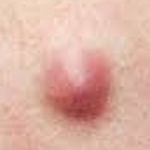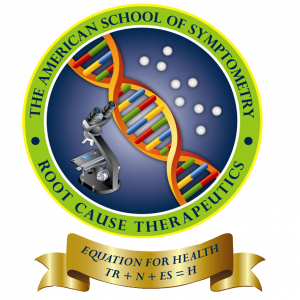
Dr. Maxwell Nartey
Professor of Symptometric Science, American School of Symptometry, NFP
A cyst is a layered pouch that a person who cannot thoroughly digest saturated fat produces. The pouch retains as many undesirables as possible, especially sludge.
What is sludge? It is a mixture of debris, water, oil, dirty blood, degraded and mushy casts, unwanted gases and stinky fats. The human body does not need this mess. This is why it creates cysts to get them out of the way, and store them. Unfortunately, storing them makes less room available to the organ. This is why cysts interfere with the organ’s activities.
For instance, cysts in the ovaries can cause infertility, cysts in the kidneys can cause elevated creatinine, low GFR and acute renal failure; cysts in the nose can make it difficult for the person to breathe, cysts in the liver can produce an unsatisfactory liver function test, a follicular cyst can block a duct, etc. A cyst can cause dry eye or burning eyes because it is blocking the lacrimal duct that supplies fluid to the eye.
To prevent sludge from leaking into the blood stream and lymphatic system, the cyst will produce an additional protective layer made of epithelium and saturated fat. The more saturated fat the person eats, and they cannot thoroughly digest it, the greater will be the number of small cysts that will be in their organ. Hence, the term POS (polycystic ovarian syndrome) or PKD (polycystic kidney disease).
Genetics
Is cyst genetic? No, it is not, contrary to popular belief. It is strictly a dietary issue. Cysts occur only in the family members who cannot produce the lipotropic hormone, and enough pancreatic lipase, intestinal lipase and emulsification enzymes. The genetic testing for cyst is so flawed that it is totally unreliable.
What does a gene do? All it does is, it releases the blueprint to DNA. If it cannot release the blueprint, commonsense requires that the reason the gene cannot release the blueprint must be investigated. This is what we do in Symptometry. We investigate the underlying cause of every genetic anomaly.
Most geneticists do not investigate anything. They attribute every anomaly to a defective gene like the gene for Alzheimer’s disease, the gene for Parkinson’s disease, the gene for cystic fibrosis, etc. without offering a solution. Something is preventing the gene from releasing the blueprint. What is it? A cyst does not just pop up. Dietary mistakes were made. They must be corrected. A cyst is a fat issue. Plain and simple.
Location
Cysts occur in the fault lines. This is why the location of the cyst like the uterus, the ovary, the liver, etc.; or the name of the cyst, the number of cysts that are in the organ, and the number of protective layers the cyst has, are totally irrelevant. A cyst is a cyst because every cyst begins in the same manner.
Morphology
Generally, a fatty lump on the forehead, on the arm, above the knee, behind the knee, on the spinal cord, on the scalp, etc. is called an epidermal cyst. Epidermal cysts and the cysts that are in the kidneys, in the liver, ovaries, breast, etc. share an identical morphology (shape, form and structure). However, the contents of the cysts may vary depending on the kinds of undesirables that are in each cyst.
The underlying cause of cysts
Cysts occur only in individuals who cannot thoroughly digest saturated fat. There are two kinds of fat: 1) saturated fat and 2) unsaturated fat.
Fat is the only food group that requires a hormone to split it first before three enzymes will digest it to release the nutrients it contains. The hormone in question is called the lipotropic hormone, and the three enzymes that must digest saturated fat are: the liver’s emulsification enzymes, pancreatic lipase and intestinal lipase.
Therefore, the underlying cause of every cyst is the non-production of the lipotropic hormone, and the three above-mentioned enzymes.
What is the lipotropic hormone made of? It is made of a lot of thermal energy. Also, it consists of specific vitamins and amino acids that must be combined according to the chemistry principle of valence.
Until the pituitary gland receives the raw materials it needs to produce the lipotropic hormone, the saturated fat the person eats will remain as it is in their body. Liver enzymes, and the two lipases will never break it down into fatty acids and glycerol.
Cyst prevention
What should a person do to prevent a cyst? They should avoid eating many sources of saturated fat, and they must provide their pituitary gland with the raw materials to produce the lipotropic hormone.
The American School of Symptometry, NFP, has the information on the sources of saturated fat that cause cysts, it has the particulate that supplies thermal energy to the glands, and the information on the well-combined amino acids and vitamins that will enable the pituitary gland to produce the lipotropic hormone.
In a nutshell, cyst prevention and cure require knowledge, dietary modification, the use of a specific particulate to supply thermal energy, and molecule therapy to supply the raw materials to produce the hormone and the enzymes. If these four measures are not taken, a quick fix will not remove the underlying cause of the cyst, PKD or POS.
The quick fix
There are dermatologists who have specialized in the surgical removal of epidermal cysts from the nose, the scalp, the neck, etc. This provides some relief, which is good, but the cyst will grow again after a few months if the person does not change their diet, and does not produce the lipotropic hormone.
What about the cysts that cause PKD (polycystic kidney disease), can a surgeon remove them? No, they cannot. The four above-mentioned measures would be the best recommendation to a person with PKD or a person who has cysts in any organ.
Indispensability of enzymes
There are five food groups. These food groups are protein, sugar, starch, oil and fat. Every food group must be thoroughly digested so that the nutrients it holds can be released to nourish the cells. What digests these food groups so that nutrients can be released to nourish the cells? The answer is, enzymes.
There are two kinds of enzymes: 1) food enzymes, and 2) ancillary enzymes. To produce ancillary enzymes aka the bond breakers, separators, adders, mixers, etc., a person must produce a lot of thermal energy.
However, in order to produce food enzymes like lactase, sucrase, maltase, lipase, trypsin, chymotrypsin, etc., specific amino acids must be combined with vitamins according to valence.
Unfortunately, people just eat what they want, and they have not been producing enzymes to digest what they have been eating in 20 years, 30 years, 40 years, etc. What should they expect? There is a hefty price to pay for not producing enzymes.
The good news is, it is not too late to learn about enzymes. Since enzymes are not taught in medical school, acupuncture school, nutrition school, naturopathic school, herbalist school, chiropractic school, etc., the American School of Symptometry, NFP, teaches all there is to know about enzymes so that people can take full responsibility for their health.
Human enzymes are not plant enzymes, and plant enzymes are not human enzymes. Also, the man-made enzymes and plant enzymes like quercetin and bromelain that are extracted from pineapple; and papain that is extracted from papaya, are pale imitations that human cells do not even recognize. This is why they have no effect on digestion.
Another reason they have no effect on digestion is, they were made with plant DNA, not with human DNA. What works for plants do not necessarily work for humans because our structure, morphology and biological needs are totally different.
Importance of granulation
To produce the essentials for our cells, brain and systems, human cells must have raw materials so that they can start the process called granulation. If we give them the wrong materials, and also, we do not provide them with thermal energy, our cells will not start granulation to produce the lipotropic hormone and the three fat-digesting enzymes.
Surgery to remove a cyst is good, but it is not root-cause therapeutics. It is symptom treatment, at best. The cyst will return if its underlying cause is not known and removed.
© Copyright 2021, The American School of Symptometry, NFP. No part of this publication may be reproduced or transmitted in any form or by any means, electronic or mechanical, including photocopying, recording, or by any information storage and retrieval system without the written permission of The American School of Symptometry, NFP. Library of Congress copyright number Txu 1-621-370, Washington D.C.


 Previous Post
Previous Post Next Post
Next Post